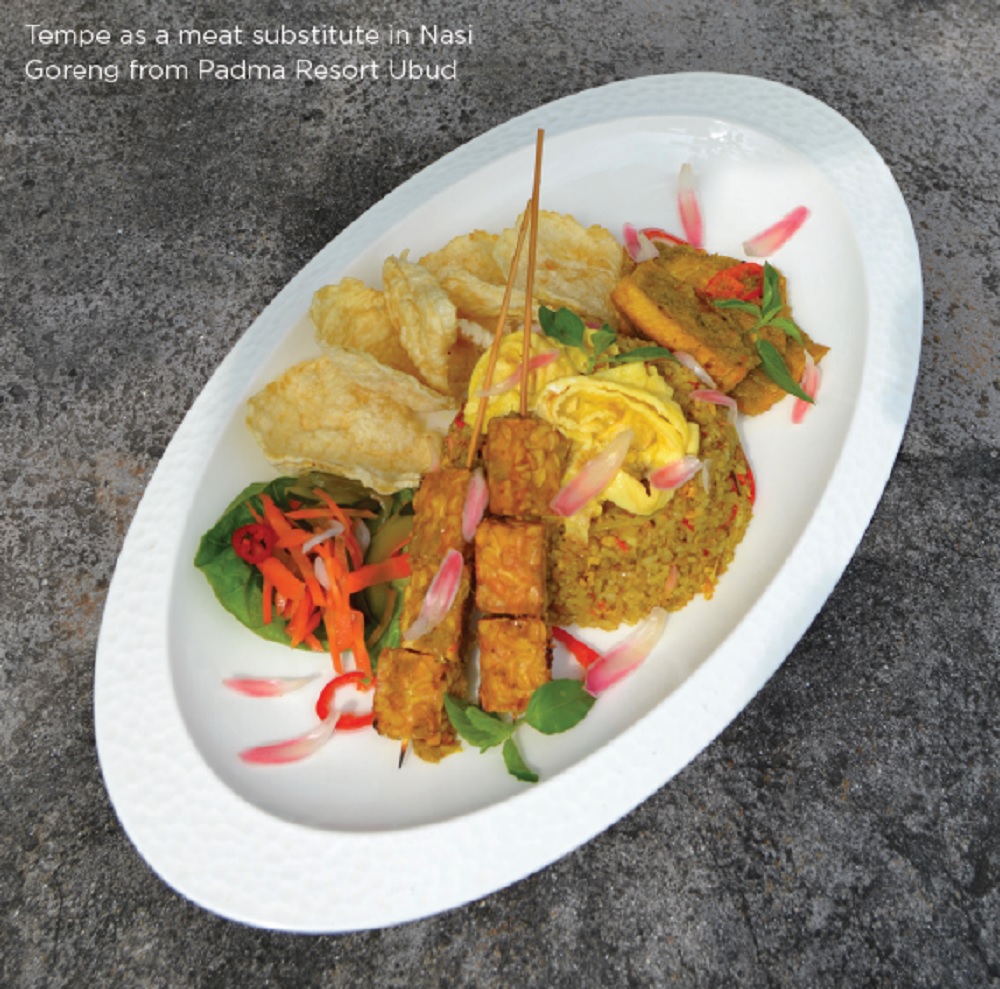Indonesia’s indigenous plantbased protein source has been traditionally consumed for centuries and has lately gained global recognition as a sustainable meat substitute. Here’s why tempe should be a mainstay on the menu and how to coax its best flavours.

Tempe (or tempeh for the sake of English pronunciation) is a compact, white cake-formed product often made from boiled soybeans through controlled fermentation with Rhizopus spp (a type of fungi). Its natural flavour can be described as nutty, mushroom-like and meaty.
High in protein and fibre as well as low in saturated fat content, tempe has also been identified as an excellent source of calcium, iron, zinc and vitamin B12. Its prebiotics, para-probiotics and isoflavones are excellent for gut health.
Tempe is not only highly nutritious but also affordable, making it a staple food for Indonesians across social and economy classes, making up 10 percent of total protein consumed, even higher than meat and chicken eggs. Tempeh: A semicentennial review on its health benefits, fermentation, safety, processing, sustainability, and affordability (2021) concluded that “compared to beef, tempeh was observed not to be inferior and potentially more favourable in terms of protein, total fat, saturated fat, fibre, cholesterol, calcium, iron, and sodium content”.
Historically originated in Java, tempemaking from indigenous soybeans have been known since the 12th century. By the time Serat Centhini – a compilation of Javanese tales and teachings – was published in 1814, tempe has widely been eaten and cooked into different dishes such as Brambang Jae Santen Tempe (Shallot, Ginger, Coconut Milk and Tempe).
To make tempe, soybeans are soaked, dehulled, washed, boiled, drained, cooled, inoculated, packaged, and lastly incubated. Teak or waru (Hibiscus spp) leaves were used as wrappers. Today, banana leaves are the most common wrap for commercially made tempe.
Global awareness for health and the impact of food on the environment propelled the popularity of tempe outside Indonesia.

From the Netherlands to Australia, tempe artisans started to mushroom overseas. Indonesian Tempe Movement, a non-profit organisation with a mission to popularise tempe through various campaigns and programmes, is right at the heart of it. “From the gastronomy standpoint, there are many fascinating aspects about tempe, from its history to the most recent innovation. Lately, making your own tempe at home and using various beans, legumes or grains as opposed to just soybeans are getting traction,” says Wida Winarno, food scientist and co-founder of Indonesian Tempe Movement.
However, the superiority of this lowcost food does not only lie on its nutritious value alone but also at its versatility as an ingredient. “Tempe can be used for various dishes, from starters to desserts. It is solid enough to be the star protein of a dish. It absorbs spices and seasonings really well and can withstand slow cooking without falling apart,” says Theodora Hurustiati Poeradisastra, head chef of Padma Resort Ubud.
In the kitchen of the lush resort, she can often be found experimenting with using tempe in different cuisines as a meat substitute for vegetarian or vegan guests. From Italian-style Polpette in tomato sauce to a Mexican Chili Sin Carne, Poeradisastra has been impressing the guests with her takes on tempe. Dukkah Tempe with Puy Lentils Tabbouleh, Pumpkin Mash and Sumac Tahini Sauce as well as Tempe Thai Green Curry are among the guests’ favourites.
